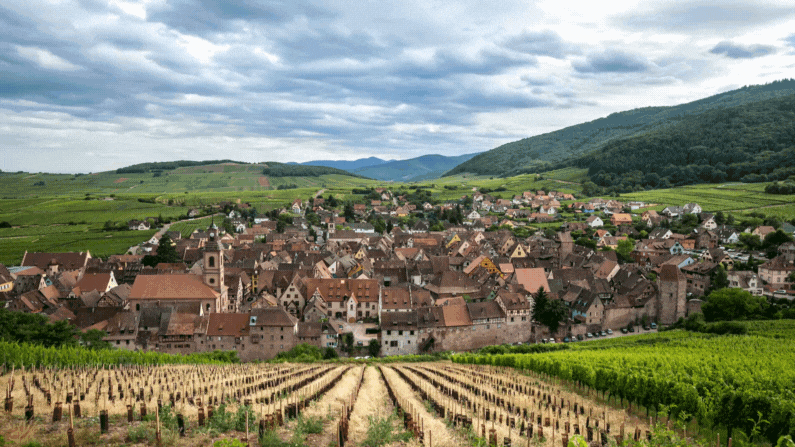
The Distinctive Wines of Alsace: French Terroir and German Legacy
The Distinctive Wines of Alsace: French Terroir and German Legacy
Alsace hardly falls in line with the other French wine making regions, from the grape varieties planted, to the styles of wine produced, down to the bottles used. Considering its location, Alsace falls on the northeastern part of France on the border with Germany. But historically, it was lost and reclaimed so many times by both Germany and France, which not only altered its nationality, but also had a dramatic effect on its culture, politics, economy, and undoubtedly its WINE. So, although Alsace is “currently” considered French, its wine industry has German legacy written all over it! Here is a closer look at the grapes and wines of Alsace reflecting that legacy.
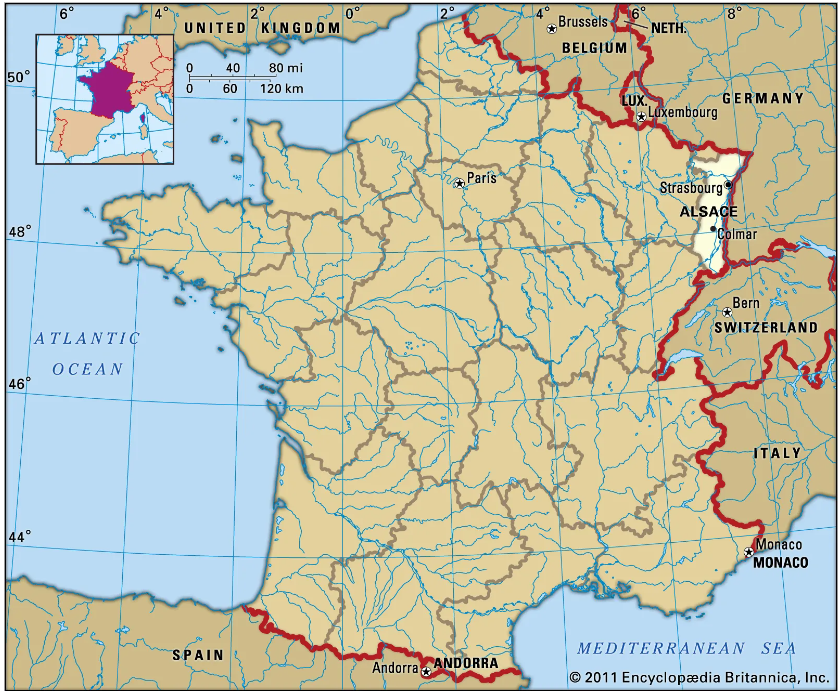
The aromatic varietal wines of Alsace
The first German influence on the wine industry in Alsace can be spotted looking at its wine bottles. Alsace traditionally uses distinctive bottles different from those used in the rest of France and are in fact very similar to the signature wine bottles of Germany. These bottles are flute-like, long and lean, and are referred to as “Flûte d’Alsace”. And on them, the labels carry information about vineyards and producers, a lot of which still have German names.
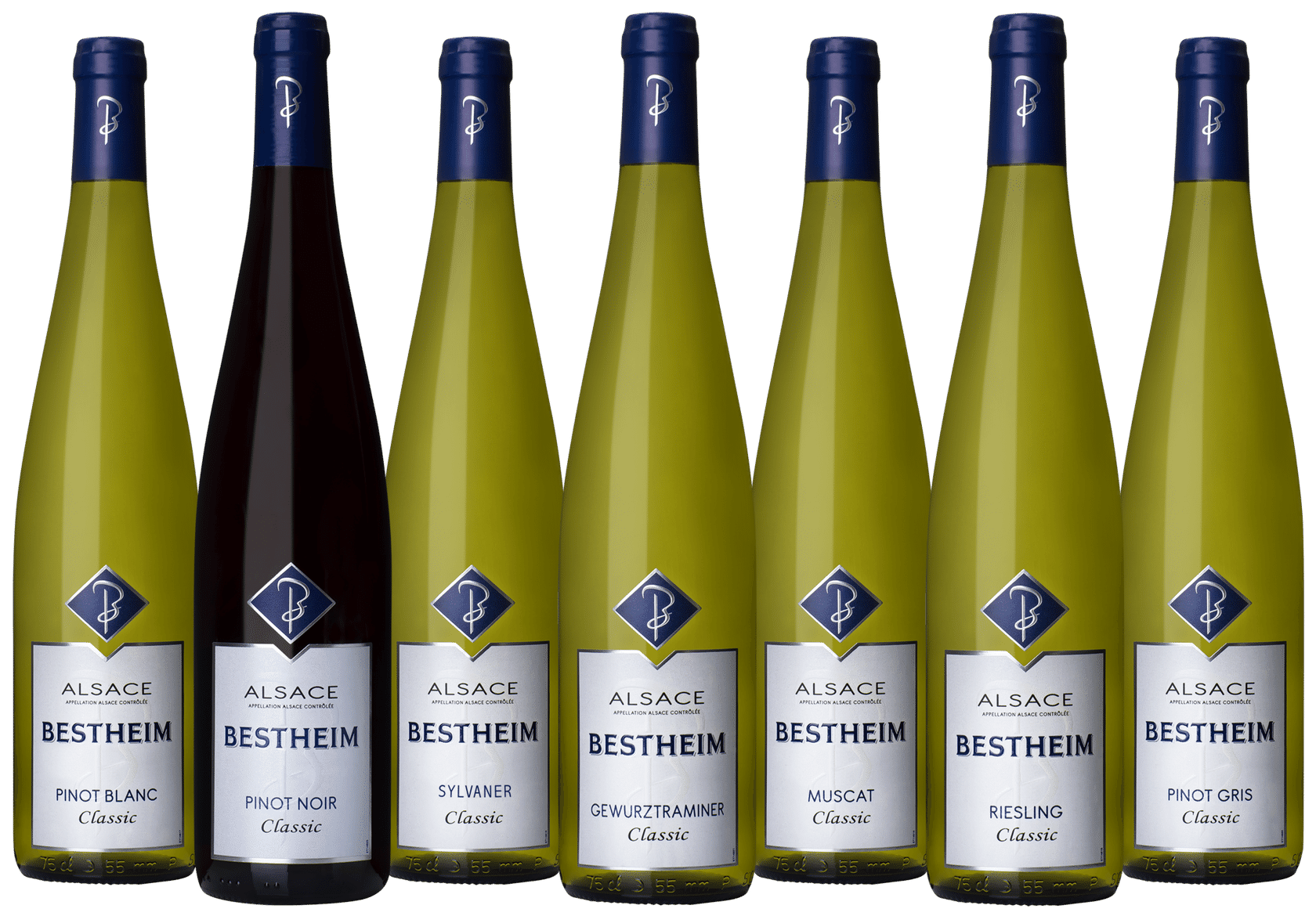
Varietally labeled wines of Alsace (Source: Wine Scholar Guild)
Alsace predominantly produces white wines which account for 89% of its total production. Alsatian producers typically champion aromatic white wines, focusing on fruits and floral aromas, and shying away from new oak barrels that are generally used in other French regions. Some producers do, however, use large old oak barrels, called “Foudres”, which can sometimes be more than a 100 years old. These barrels act more like storage containers: they don’t influence the flavor of the wine, because of their age and size, and they prevent oxidation, thanks to the thick tartrate deposit that acts like a barrier between the wine and the barrel walls.
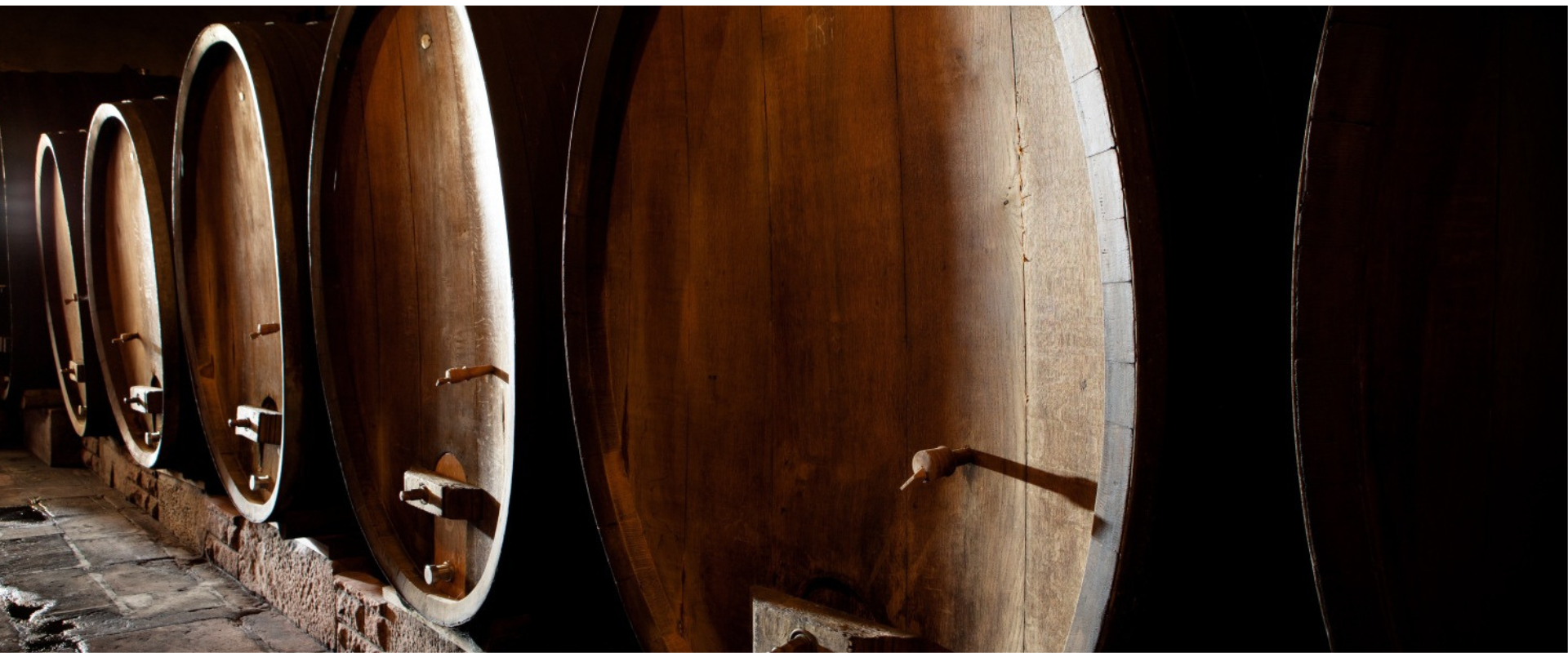
Large old oak barrels sometimes used in Alsace (Source: Domaine Weinbach)
In addition to that, Alsace celebrates varietal wines, which are wines produced from a single grape variety. This is in contrast to the vast majority of French wine regions which are famous for mastering blended wines. Varietal wines account for approximately 80% of the wines produced in Alsace and they should include 100% of the grape variety mentioned on the wine label.
The remaining 20% of the wines are blends labeled “Gentil” and “Edelzwicker”. Wines labeled “Gentil” should have a minimum of 50% of the ‘noble grapes’ (Riesling, Gewurztraminer, Pinot Gris, and Muscat) while “Edelzwicker” is a blend of the permitted white grapes in Alsace.
Alsace’s noble grapes led by Riesling

Zooming in on grape varieties, the most dominant and prestigious is Riesling– as it is in Germany where it is originally from- planted on 21% of the vineyard area in Alsace. The Riesling wines of Alsace generally have aromas of citrus and stone fruit and are typically less floral than those of Germany. However, unlike Germany that produces Riesling wines with a varied level of sweetness, Alsace typically produces them dry, leaving no residual sugar in the wine. That said, producers in Alsace are recently facing a major challenge keeping the dry style they are traditionally famous for. The rise in temperature, due to climate change, is overripening the grapes which in turn leads to unfinished fermentation, leaving residual sugar, and hence producing many ‘off-dry’ wines. Currently Alsatian producers are not bound by law or regulations to indicate the sweetness of the wine on the label, and as a result some of the wines of Alsace are becoming increasingly unpredictable to the consumers. To solve this issue, some of the producers have taken the initiative to display their own sweetness guides on the bottle.
Riesling is one of Alsace’s 4 main grapes, called ‘noble grapes’, alongside Gewurztraminer, Pinot Gris, and Muscat. Gewurztraminer is a very aromatic grape known for its oily texture and exotic aromas mainly of ginger, rose, and lychee. The grape’s birthplace is believed to be the German speaking part of Alto Adige in North Italy; however, Gewurztraminer has taken Alsace as its spiritual home, displaying its most famous expressions there. Gewurztraminer is extremely rare in other wine regions in France and can only be found as very few plantings in the Languedoc Roussillon area.
Alsace is also famous for making one of the best expressions of Pinot Gris in all of France, having a fuller body than its counterparts in other French regions, along with richer and more complex aromas of mainly dried fruits, apricots, and honey.
The secondary grape varieties planted in Alsace are Sylvaner, Pinot Blanc, and Pinot Noir. Pinot Noir is the only black grape permitted in Alsace and it is producing more concentrated wines recently due to the warmer climate induced by climate change. It is interesting to note that Pinot Noir is also the most important red wine grape variety in Germany (known there as Spätburgunder).
Other grapes permitted in Alsace are Auxerrois, Chardonnay, Chasselas and Savagnin Rose. All these grapes, regardless of their origins, thrive in the region’s continental dry and sunny climate that provides a long growing season.
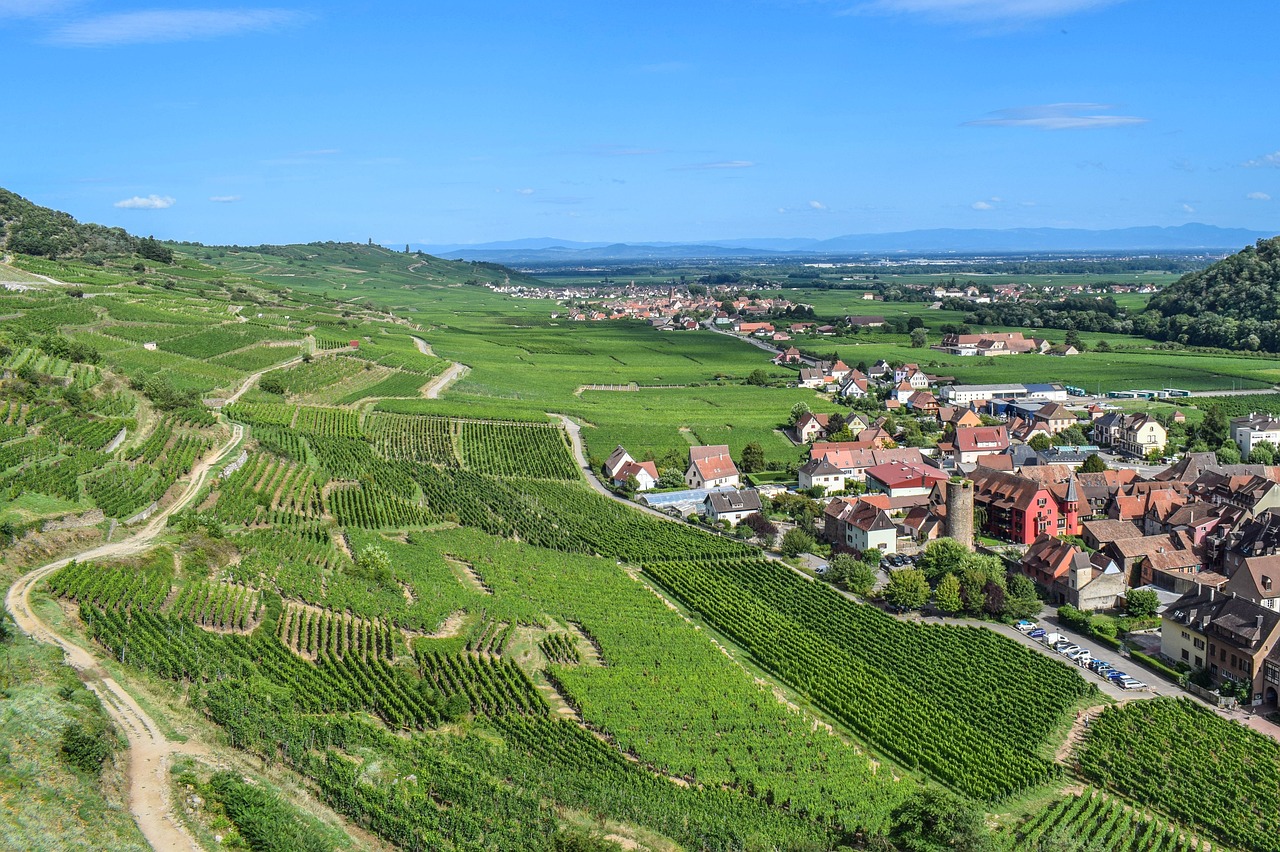
Sparkling and dessert wines
In addition to dry white wines, Alsace also produces sweet wines. These are produced from late harvested, handpicked grapes in two styles: “Vendanges Tardives (VT)”- literally ‘Late Harvest’- and those produced from grapes affected by ‘noble rot’ that are labeled “Sélection de Grains Nobles (SGN)”. Noble rot is a fungus that leads to concentrated sugars in the grape, under special conditions. These sweet wines are also single varietal and, along with Grand Cru wines, are only produced from the noble grape varieties. It is worth noting here that wines produced from late harvest grapes or those affected by noble rot resemble the dessert wines produced in Germany, where wines are classified according to the sweetness of their must weight (the level of sugar in the grape juice before fermentation).
Another style of wine gaining more attention in Alsace is Crémant, sparkling wine that is produced in the traditional method in France, outside of the Champagne region. Crémant accounts for 25% of the total wine production in Alsace and it is currently on the rise, producing 33 million bottles in 2019. Pinot Blanc, Auxerrois, Chardonnay and Riesling are the main grapes used in Crémant d’Alsace.
Leveraging on the French and German influences, in addition to its exceptional geology and organic and biodynamic farming practices, Alsace has managed to carve a unique wine identity of its own. And even though only 25% of Alsatian wines are exported, they are well sought after and have earned a respectable spot in the international wine community, from consumers and critics alike.


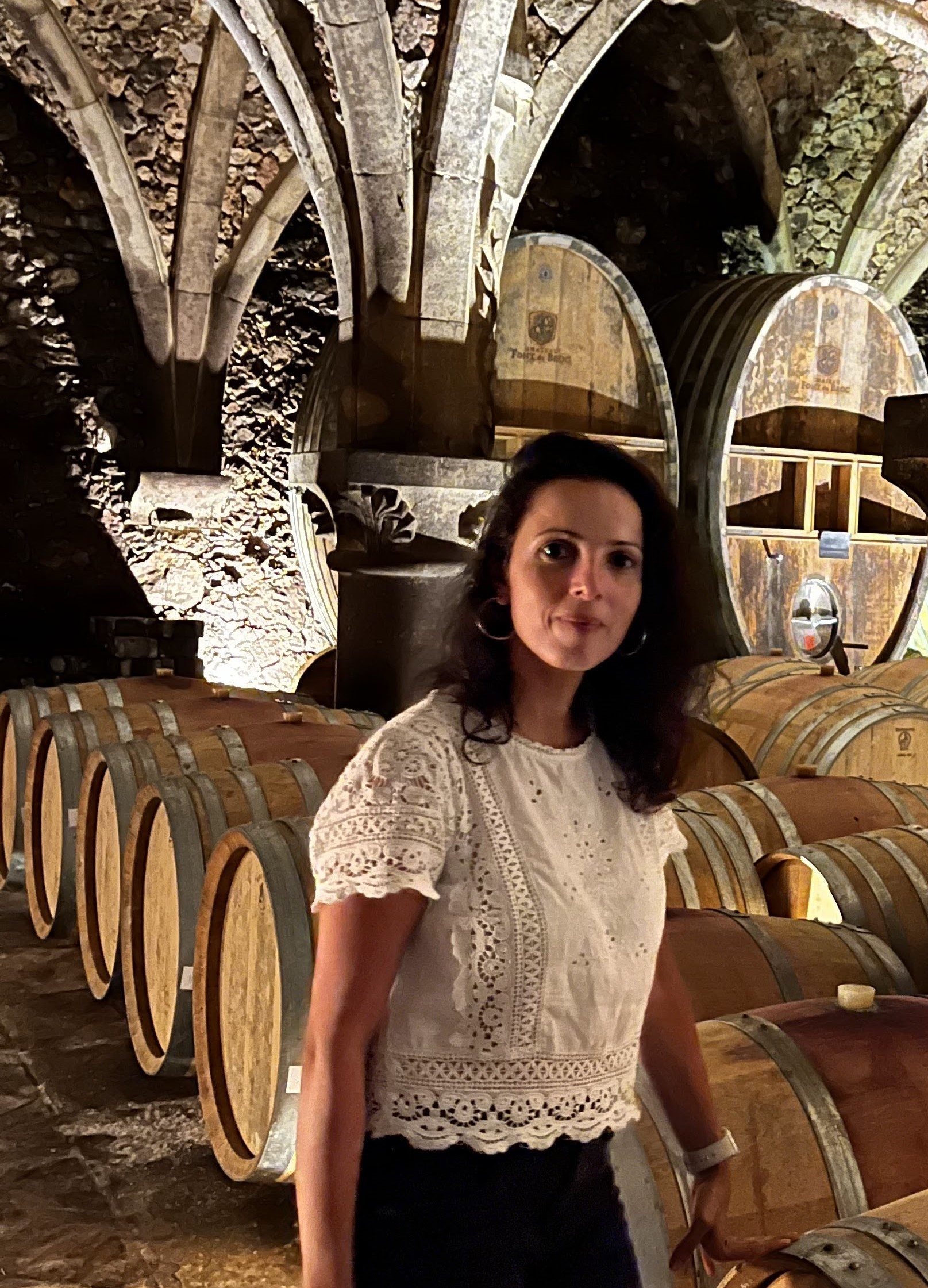
Rana is a certified WSET3 and French Wine Scholar. She is a forever student with a passion for wine stories and converting wine drinkers to enthusiasts following their own wine journeys. Rana comes from the ancient land of wine Lebanon and currently lives in Dubai with her other two passions, her kids.
IG: @thewineofthings
Website: https://thewineofthings.com


